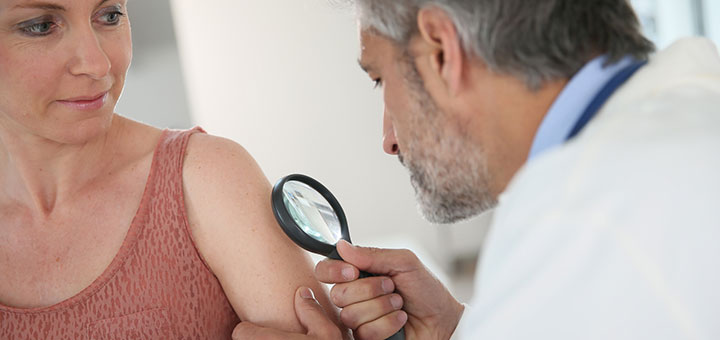Let’s face it, us Brits tend to throw caution to the wind when we see a few rays of sunshine at home and we are often completely irresponsible in the sun when abroad.
It’s so hard for authorities and health charities to get the sun safety message across when many of us look forward to our summer hols and want to sport a tan to prove we had a great time. It’s even harder to convince young people that they are risking their lives and future good looks by basking for hours in the sun. We think that we can always ‘be good’ later on and make up for past excesses…but not if you’ve irreparably damaged your skin or developed malignant melanoma.
Our antipodean friends are far ahead of us in the sun safety stakes. Recently a friend return from travelling in New Zealand and Australia and she said, that as a fair- skinned Brit, her local friends had forced her to cover up and wear sun- screen and hats for her entire time out there. Even with such increased awareness, she said that two of her friends there were diagnosed with non-melanoma skin cancer during her visit. In fact, there are more skin cancer deaths in the UK than in Australia, even though Australia has more cases of the disease.
Every day in the UK, 200 new cases of skin cancer are diagnosed. This tragedy is sharpened by the fact that The British Skin Foundation reckons that as many as four out of five such cases are entirely preventable.
Small amounts of UV radiation from the sun are beneficial for people and essential in the production of vitamin D but most of us can get adequate amounts by spending some time outdoors in natural light. The amount of UV radiation we expose ourselves too whilst sun bathing can, cumulatively, be deadly and result in acute and chronic health effects on the skin, eye and immune system. Astoundingly, a 2007 Cancer Research UK survey found that many adults still believe you need to burn to tan.
One mistake is believing that sunscreen is all you need to ward off the sun, and another is that the higher the SPF, the longer you can stay in the sun. I’m sceptical about sunscreens that advertise themselves as long-lasting or water-proof: SPF physically wears off with rubbing, sweating and water. The protection you get is more likely one hour to 80 minutes.
Always choose a sunscreen that has an SPF over more than 15 but don’t be fooled into thinking that a very high SPF will allow you to stay out in the sun for longer without consequences. An SPF 15 blocks 94 percent of UVB rays, while SPF 30 blocks 97 percent of UVB rays. Above SPF 30 you don’t get much additional protection from higher factors.
You will therefore still need to regularly reapply even very high factor sunscreens. And remember that the SPF figure relates to how well the product blocks UVB rays. Many products are not effective at blocking the aging, cancer-causing UVA rays. Look for sunscreens labelled ‘broad spectrum’ which aim to protect against UVA and UVB. Chuck out any old products that are past their use by dates or that have got hot in the sun: heat and time degrade the active ingredients.
Wear clothes that will protect you in the sun – sunglasses, clothing of tightly woven fabric and a sun hat covering the neck, ears and back of the neck. By avoiding the sun between 11am and 3pm you can prevent sun burning and overexposure.
Always consult with your GP if you notice any unusual changes in your skin or your moles. Any moles which become itchy or bleed, or change in colour, shape or size should be reported to your doctor. Enjoy your holidays or free time this summer without sporting burnt bits or putting yourself at risk of skin cancer.
Tanning myths
- A sun tan is healthy. A tan results from your body defending itself against further damage from UV radiation.
- A tan protects you from the sun.
- A dark tan on white skin only offers an SPF of about 4.
- You can’t get sunburnt on a cloudy day. Up to 80% of solar UV radiation can penetrate light cloud cover.
- You can’t get sunburnt while in the water. Water offers only minimal protection from UV radiation, and reflections from water can enhance your UV radiation exposure.
- Sunscreens protect me so I can sunbathe much longer. Sunscreens are not intended to increase sun exposure time but to increase protection during unavoidable exposure. The protection they afford depends critically on their correct apapplication.
- If you take regular breaks during sunbathing you won’t get sunburnt. UV radiation exposure is cumulative during the day.

